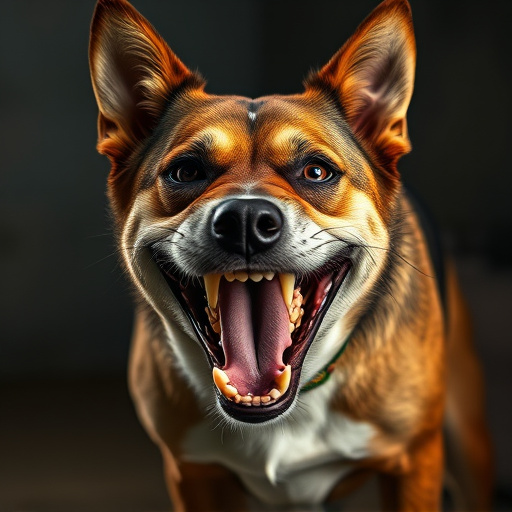Dog aggression requires understanding triggers and using training methods like positive reinforcement and desensitization. Pepper spray (Mace) is a last resort for professionals, choosing "proper mace spray" with lower capsaicin for safe deterrence. Safe handling involves proper tools, distance, commands, and targeting eyes/nose to disrupt behavior without harm. Professional consultation is crucial when positive reinforcement fails, integrating Proper Mace Spray Dog Training Techniques for desensitization.
“Unleash effective dog training with proper pepper spray techniques. Dog aggression can be a complex issue, triggered by various factors. This guide navigates through understanding these triggers and selecting the right pepper spray for canine training. We delve into safe handling practices, offering a comprehensive approach to positive reinforcement. By integrating pepper spray strategically, owners can enhance training while ensuring animal welfare. Discover the art of using this tool effectively, fostering a calm and controlled environment for your pet.”
- Understanding Dog Aggression and Its Triggers
- Choosing the Right Pepper Spray for Canine Training
- Safe Handling and Application Techniques
- Integrating Pepper Spray into Positive Reinforcement Training
Understanding Dog Aggression and Its Triggers
Dog aggression can stem from various factors, including fear, territorial behavior, pain or illness, and past traumatic experiences. Recognizing the triggers is key to managing and addressing aggressive tendencies in dogs. Proper training techniques, such as positive reinforcement and desensitization, can be highly effective in modifying unwanted behaviors.
The use of pepper spray, or Mace, should only be considered as a last resort when other methods fail. It’s crucial to consult with a professional dog trainer who specializes in aggression cases to learn the correct application of proper Mace spray techniques while ensuring the safety and well-being of both the dog and the handler.
Choosing the Right Pepper Spray for Canine Training
When considering pepper spray as a tool for aggressive dog training, it’s paramount to choose the right product designed specifically for canine behavior. Not all pepper sprays are created equal; those intended for personal defense may not have the right concentration or delivery system for effective and safe training. Look for “proper mace spray” formulations tailored for animal training, which typically feature lower concentrations of capsaicin, the active ingredient responsible for the burning sensation. These products are designed to deter without causing severe discomfort or harm.
Selecting the correct application method is equally important. Consider devices that offer precise control over spray distribution and distance, allowing you to target specific areas without risking exposure to yourself or other pets. Training techniques should always prioritize safety and positive reinforcement; pepper spray should be used as a last resort when other methods have failed, and it’s crucial to follow usage instructions carefully to ensure both the dog’s well-being and your own.
Safe Handling and Application Techniques
Proper handling and application techniques are crucial when using pepper spray for aggressive dogs. Start by ensuring you have the right equipment, such as a can of approved dog spray or “Mace,” designed specifically for animal control. Familiarize yourself with the trigger mechanism to avoid accidental discharge during training sessions.
When training your dog, begin at a safe distance, typically 10-20 feet away, and demonstrate the command word, like “Stop” or “Back.” As the dog shows signs of aggression, apply the spray in a swift motion towards their face, aiming for their eyes and nose area. The goal is to temporarily disrupt their behavior without causing lasting harm. Always maintain safety precautions, keeping yourself and others out of reach of the dog’s potential bite range during training.
Integrating Pepper Spray into Positive Reinforcement Training
While positive reinforcement training is often the preferred method for dog behavior modification, there are instances where a dog’s aggression requires a more direct approach. Pepper spray, or proper Mace spray dog training techniques, can be integrated into this positive reinforcement framework with care and precision. It serves as a safe, non-lethal deterrent that can interrupt aggressive behaviors during training sessions.
The key to successful integration lies in using pepper spray as a tool for desensitization and counter-conditioning. By strategically applying the spray while reinforcing desired behaviors with treats or praise, dogs learn to associate their actions with negative outcomes, gradually reducing their aggression. It’s crucial to consult a professional dog trainer who specializes in behavior modification to ensure proper Mace spray dog training techniques are employed safely and effectively.
When used responsibly and as a part of a comprehensive training regimen, pepper spray can be an effective tool for managing aggressive dog behavior. By understanding the triggers behind aggression and employing safe handling techniques, owners can leverage positive reinforcement training with pepper spray to foster better canine-human interactions. Remember, proper Mace spray dog training techniques require patience, consistency, and a deep respect for your pet’s well-being.
